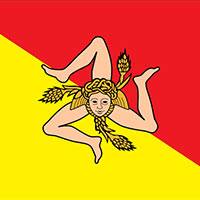Sicilian Artists and Architects
Antonello da Messina (c. 1430-1479)
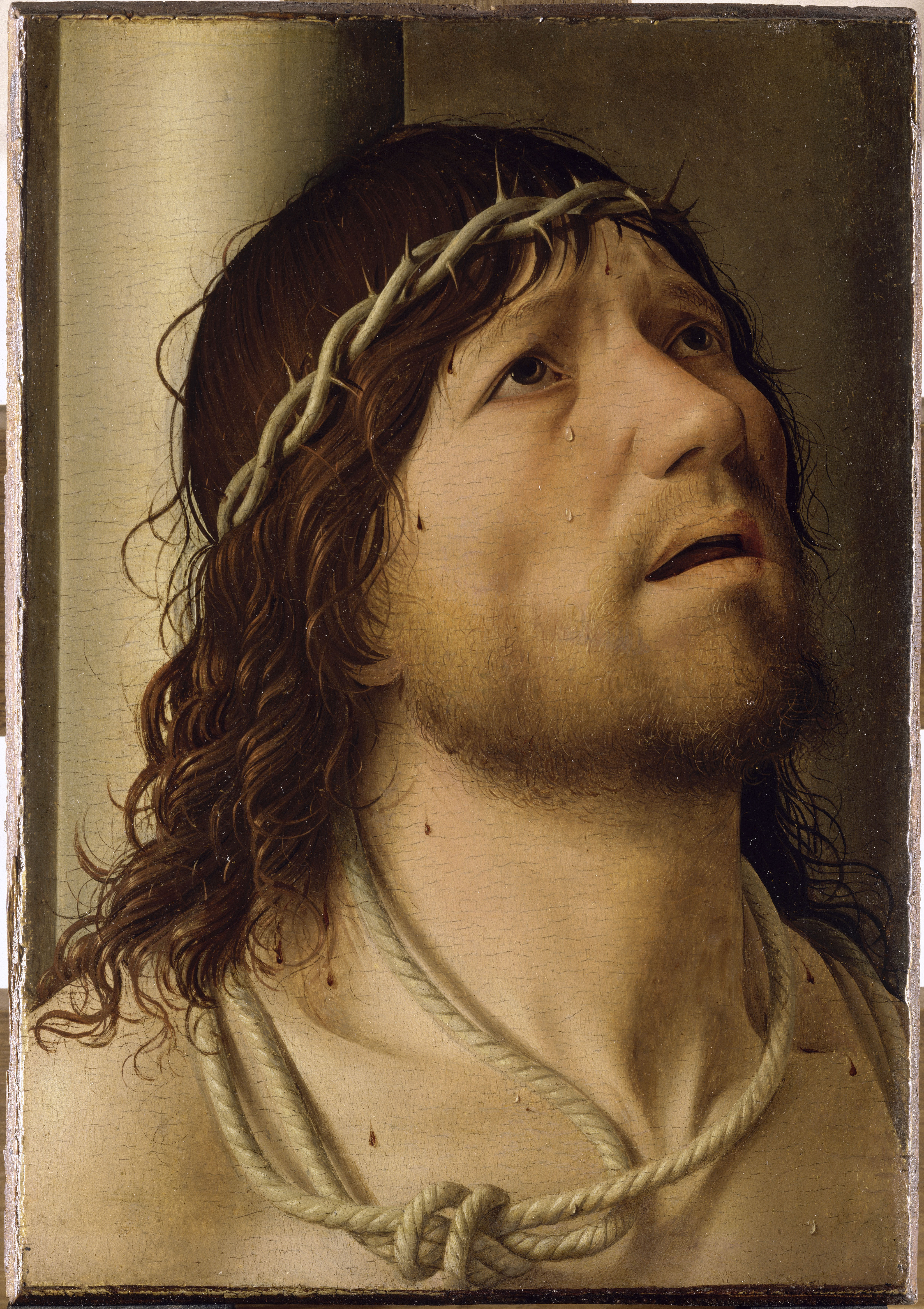
Antonello da Messina (c. 1430-1479): Portrait of Christ at the column (1476, now in Louvre). Incredible details. Antonello da Messina is Sicily's great renaissance painter.
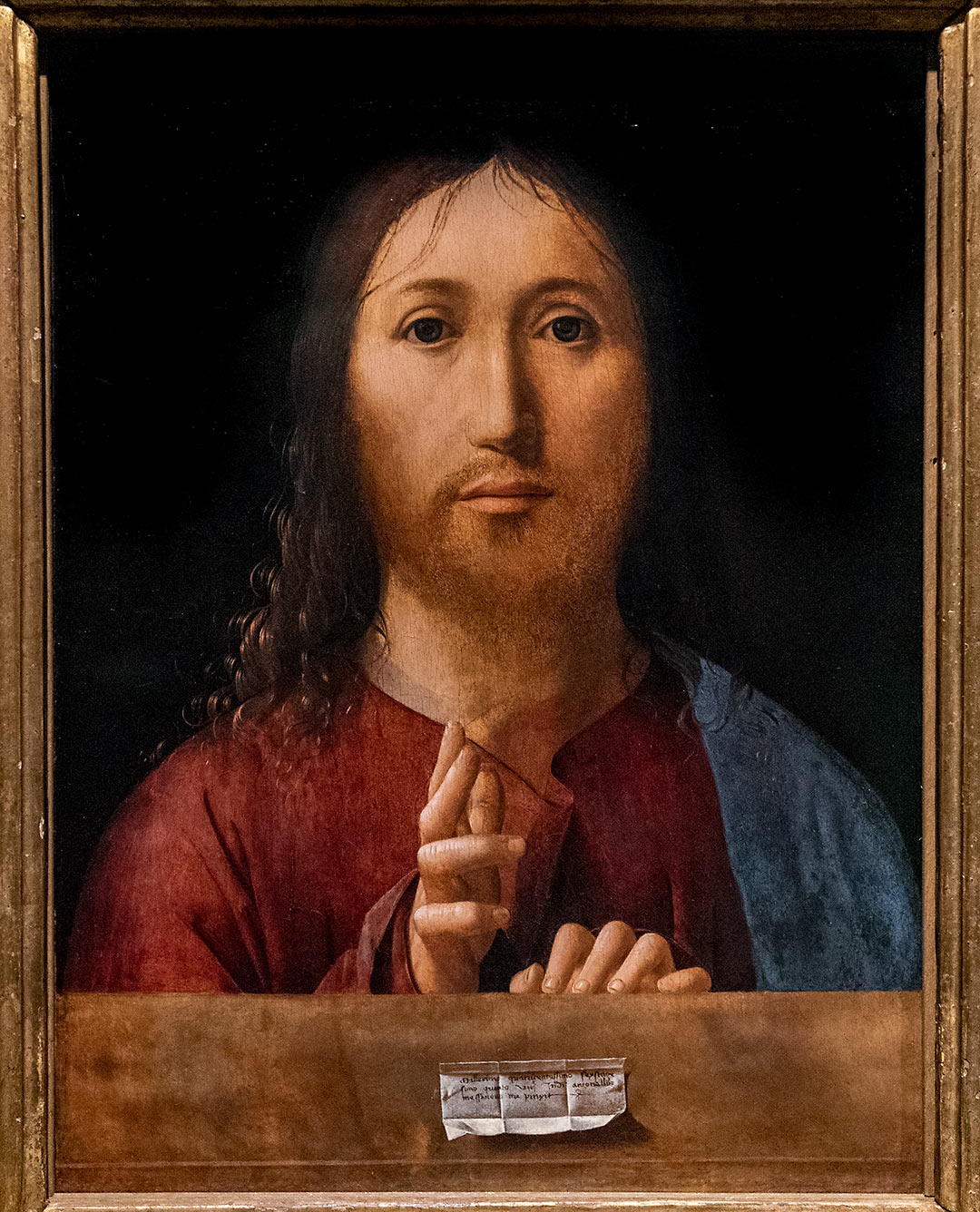
Christ Blessing by Antonello da Messina. The painting can be seen in room 26 at the National Gallery in London.
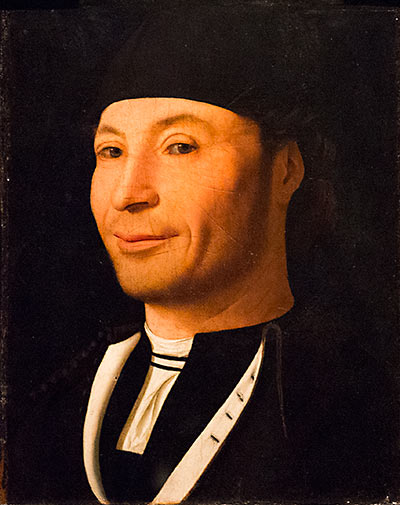
Antonello da Messina (c. 1430-1479): Portrait, maybe of a sailor (?). Now in Museo Mandralisca, Cefalù.
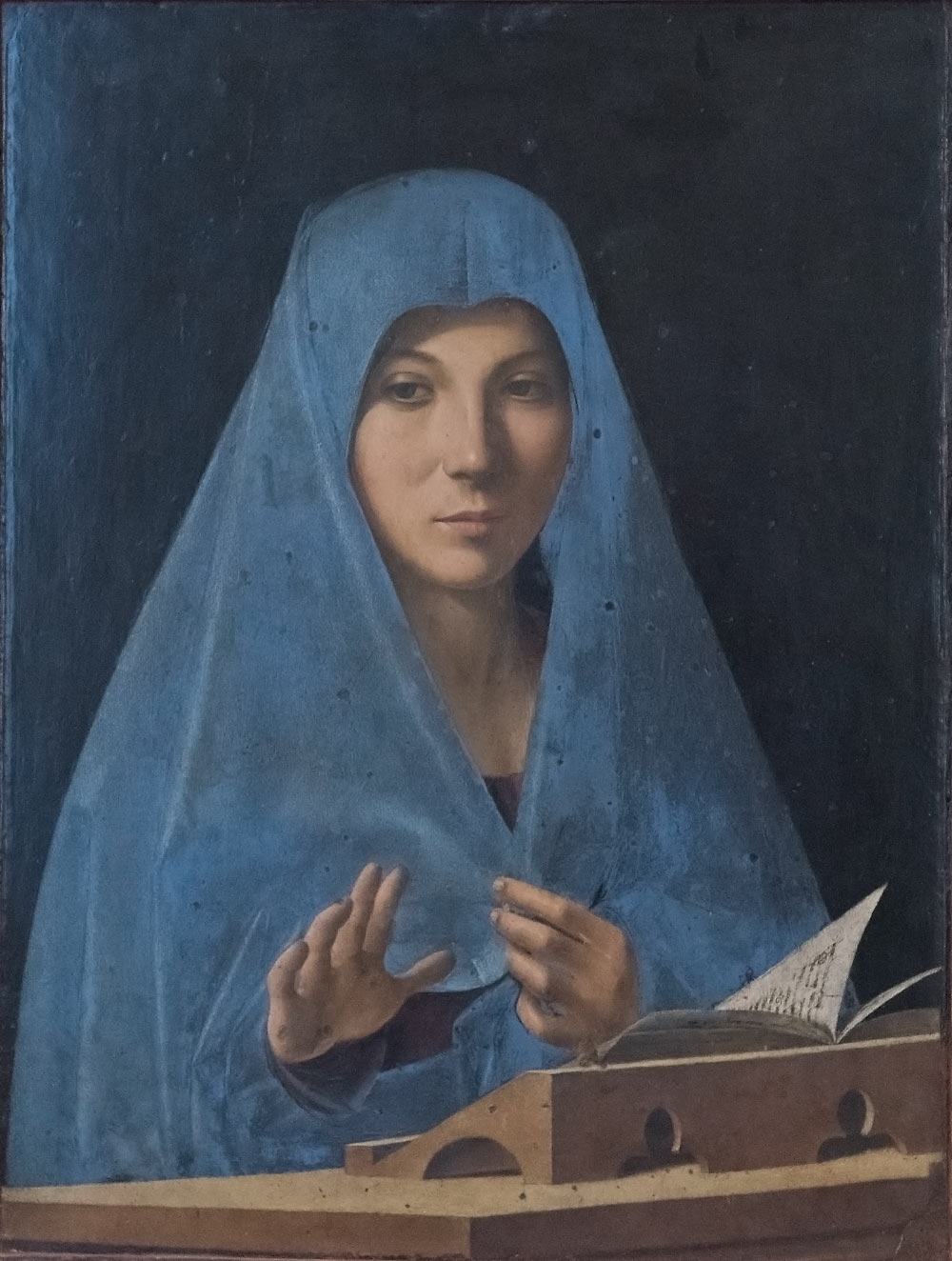
Antonello da Messina: Virgin Annunciate (1474). In Galleria Regionale, Palazzo Abatellis, Palermo. Antonello da Messina is Sicily's great Reneaissance painter.
Giovanni Battista Marino
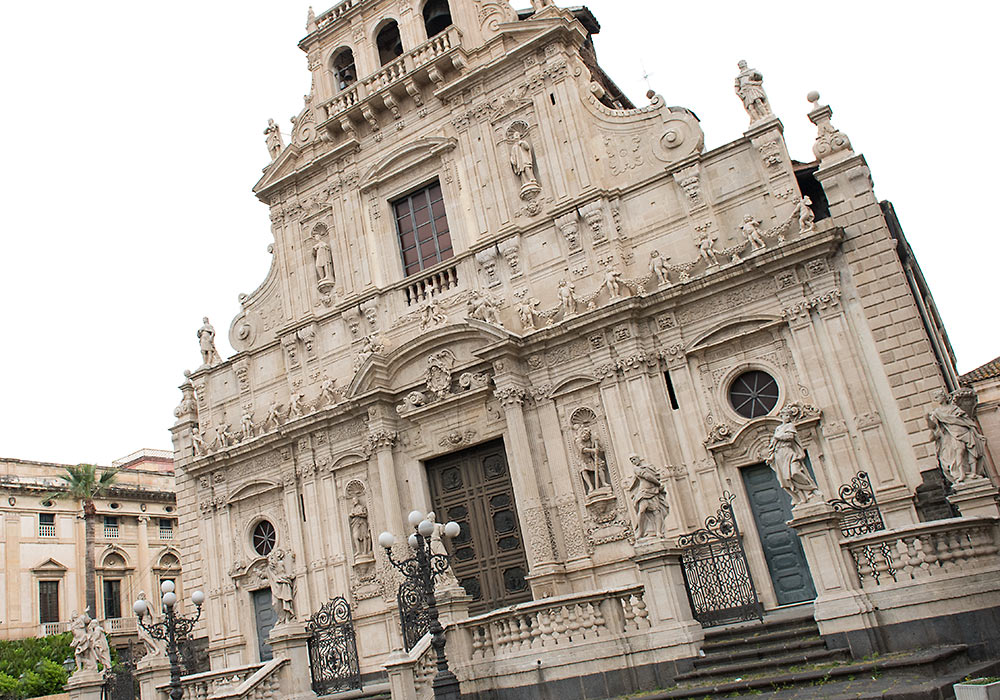
Acireale's San Sebastiano has one of the most beautiful baroque facades in Sicily. The statues are by Giovanni Battista Marino (1754)
Pietro Novelli (1603-1647)
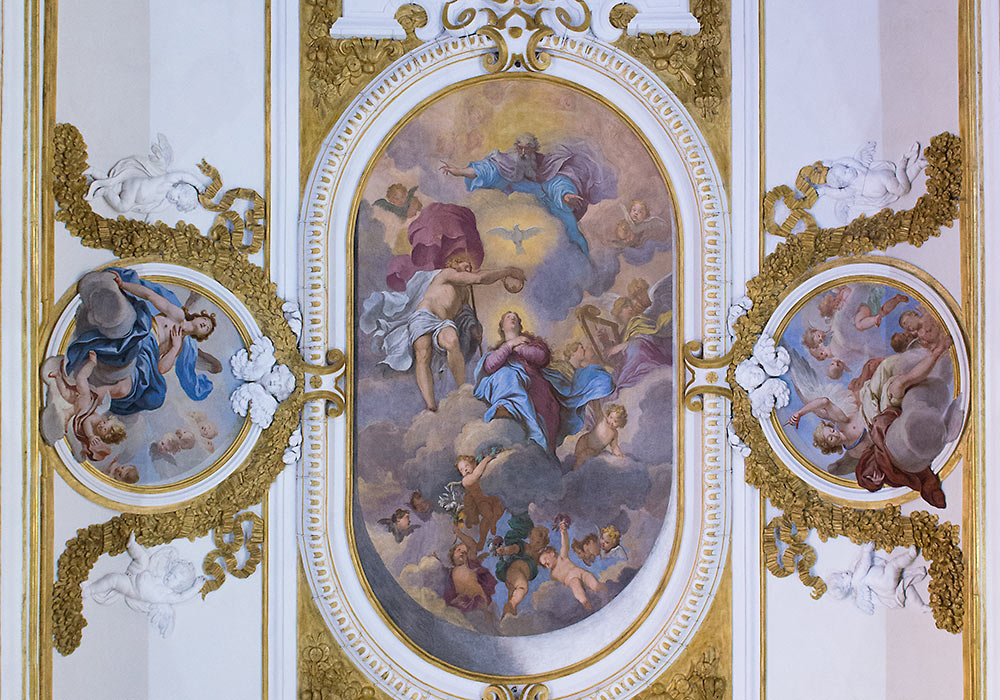
The painter Pietro Novelli (1603-1647) from Monreale was a member of the Compagnia. He painted the fresco on the vault, The Coronation of the Virgin.
Giacomo Serpotta (1656-1732) and His Workshop
The Sicilian sculptor Giacomo Serpotta (1656–1732) was mainly working in stucco. He was born and died in Palermo. He is known for the excellent stucco decorations in the Oratory of San Lorenzo (1690/98–1706), the Oratory of Santa Cita (1668–1718), the Oratory of Rosario di San Domenico (1710–17).
The Serpotta family
The Serpotta family was a renowned lineage of sculptors and stucco artists (stuccatori) in Sicily, with Giacomo Serpotta as its most illustrious member. Key figures of the Serpotta family include:
- Giacomo Serpotta (1656–1732): The most famous member, celebrated for his innovative Rococo-style stucco work.
- Giuseppe Serpotta (1653–1719): Giacomo’s brother, who collaborated with him in their Palermo-based family studio. The attribution of the stuccoes in the Oratory of San Mercurio has recently been resolved with the discovery of archival documents confirming their authorship by Giacomo Serpotta and his older brother Giuseppe.
- Procopio Serpotta (1679–1755): Giacomo’s son, who upheld the family’s stucco artistry tradition. Procopio inherited Giacomos collection of engravings, designs, and models. He was, according to Donald Garstang, an artist worthy of his father, although he didn't have the “important margin of artistic autonomy which his father maintained in his relations with the architects and painters involved in the decoration of the oratories and churches.”
- Gaspare Serpotta: Giacomo’s father, a skilled artist in his own right.
The Serpotta family often worked together on projects, decorating churches, oratories, and religious buildings across Sicily. Their workshop was especially active in Palermo, where they crafted intricate and distinctive stucco decorations.
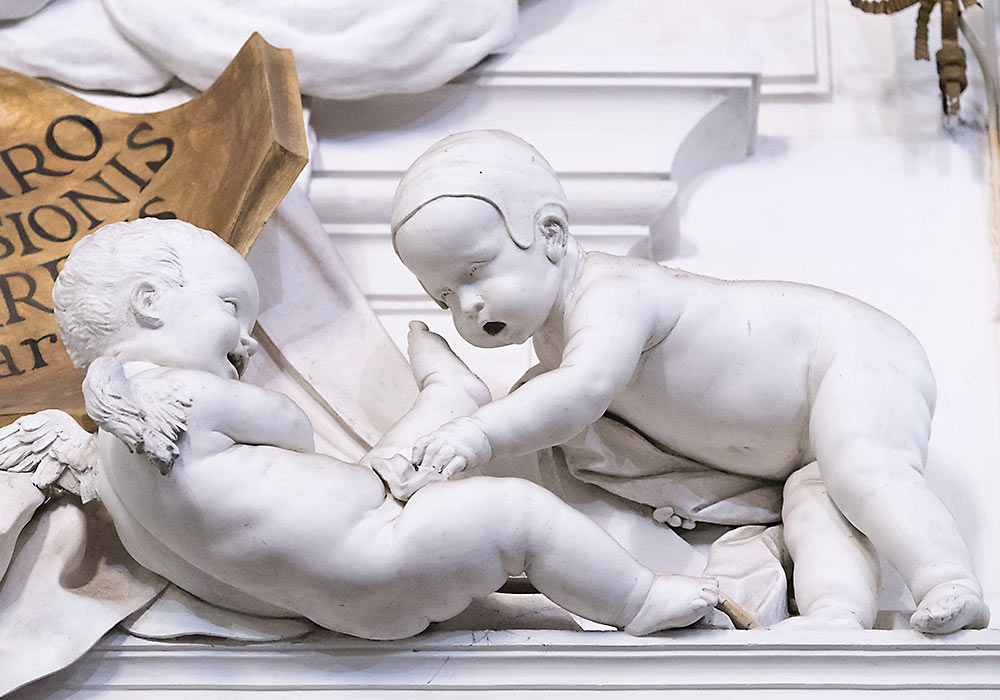
A charming detail of putti in the Oratory of Santa Cita.
A Selection of Some of Serpotta's works
- Oratory of San Lorenzo (1690/98–1706)
- Oratory of Santa Cita (1668–1718)
- Oratory of Rosario di San Domenico (1710–17)
- Oratory of San Mercurio (1678–82)
- the chapel for the Ospedale di Palermo
- (? Cappella Palatina, Castelbuono)
- the Archbishop's Palace in Santa Chiara
- the Badia Nuova and the Church of SS. Cosma e Damiano in Alcamo

